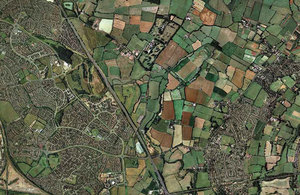New measures to unlock brownfield land for thousands of homes
Councils will have new tools to speed up development of derelict and underused land for new homes.

Councils will have new tools to speed up development of derelict and underused land for new homes, Housing and Planning Minister Gavin Barwell confirmed today (3 April 2017).
Local authorities across the country will now have to produce and maintain up-to-date, publicly available registers of brownfield sites available for housing locally.
The new registers will help housebuilders identify suitable brownfield sites quickly, promising to unlock land for thousands of new homes.
Communities will be able to highlight local derelict or underused building sites that are primed for redevelopment. This can bring investment to the area and increase the number of new homes in the area.
As set out in the recently published Housing White Paper, the registers are part of the government’s ambitious programme to speed up house building, promote brownfield sites for development and release land to deliver many more new homes.
Housing and Planning Minister Gavin Barwell said:
We need to build more homes in this country so making sure that we re-use brownfield land is crucial. We want to bring life back to abandoned sites, create thousands more homes and help protect our valued countryside.
These new registers will give local authorities and developers the tools to do this.
Brownfield registers were first piloted in 2016, when 73 local planning authorities across the country pioneered the measures.
In addition, the £3 billion Home Builders Fund will be used to support the development of brownfield sites, with an additional £1.2 billion provided to unlock at least 30,000 Starter Homes on brownfield land.
Permission in principle
The government has also introduced a new way of obtaining planning permission through these new registers. It will make it easier for developers to deliver housing in the places where people want to live.
‘Permission in principle’ will simplify the planning process for developers. It will give them more certainty over whether a site is suitable for development ahead of working up costly proposals to obtain full planning permission. This will encourage new development and increase the amount of land available to build on, helping to boost housing supply.
Further legislation will follow this year to roll-out ‘permission in principle’ more widely through the planning system.
Further information
The government’s response to the technical consultation on the implementation of the Housing and Planning Act, chapters 2 and 3 on permission in principle and brownfield registers, has been published today.
The regulations implementing brownfield registers and permission in principle through brownfield registers have been laid in Parliament as part of secondary legislation relating to the Housing and Planning Act. They will come into force 21 days after being laid.
Statutory guidance for local authorities will follow to explain the role of brownfield registers and permission in principle in more detail.
Office address and general enquiries
2 Marsham StreetLondon
SW1P 4DF
Contact form https://www.gov.uk/gui...
General enquiries: please use this number if you are a member of the public 030 3444 0000
If your enquiry is related to COVID-19 please check our guidance page first before you contact us - https://www.gov.uk/guidance/coronavirus-covid-19-guidance-for-local-government.
If you still need to contact us please use the contact form above to get in touch, because of coronavirus (COVID-19). If you send it by post it will not receive a reply within normal timescale.
Media enquiries
Email newsdesk@communities.gov.uk
Please use this number if you are a journalist wishing to speak to Press Office 0303 444 1209
Social media - MHCLG
Twitter - https://twitter.com/mhclg
Flickr - http://www.flickr.com/photos/mhclg
LinkedIn - http://www.linkedin.com/company/mhclg